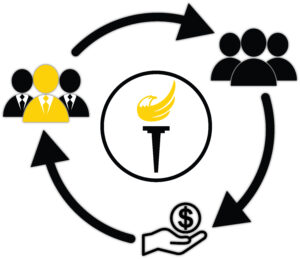Being a Man the Lord’s Way
In today’s world, there’s a lot of noise about what it means to “be a man.” Too often, the world’s version of masculinity is loud, shallow, and self-centered—measured by how much money you make, how tough you act, or how little emotion you show.
That version misses the mark.
Elder D. Todd Christofferson once said, “By divine design, fathers are to preside over their families in love and righteousness and are responsible to provide the necessities of life and protection for their families.” That simple truth also points to the deeper meaning of what it is to be a man of God—not the world.
Masculinity Is Responsibility
Godly men don’t run from responsibility. They embrace it. Real masculinity is shown through commitment—to family, to principle, to faith.
A man of God leads not with ego, but with example. He presides in love, provides without complaint, and protects what matters most—not just the home, but the hearts inside it.
More Than a Paycheck
The world teaches that being a provider is just about money. But providing also means being emotionally and spiritually present. It means offering wisdom, showing up, and creating a safe space for your family to grow in truth.
Protection, likewise, isn’t about brute force—it’s about spiritual stewardship. A real man protects his family’s values, their future, and their peace.
Strength Isn’t Harshness
The world often confuses masculinity with aggression or dominance. But the Savior—the greatest example of manhood—was humble, gentle, and kind.
Being a man means standing strong in your convictions but doing so with mercy and grace. It means having the courage to discipline with love and the strength to show vulnerability when your children need comfort.
Men Are Meant to Build
Godly men are builders. We build homes, faith, and futures. We don’t shrink from challenges or tear others down. We help carry burdens. We show up when it’s inconvenient. We seek the Lord in how we lead our families.
The Choice Is Clear
The world says:
“Assert your dominance. Don’t show weakness. Chase power.”
The Lord says:
“Serve humbly. Love deeply. Lead righteously.”
We don’t need more worldly men. We need more godly ones.
That’s the man I strive to be—not just for my wife and children, but for my Savior.
Being a Man the Lord’s Way Read Post »



